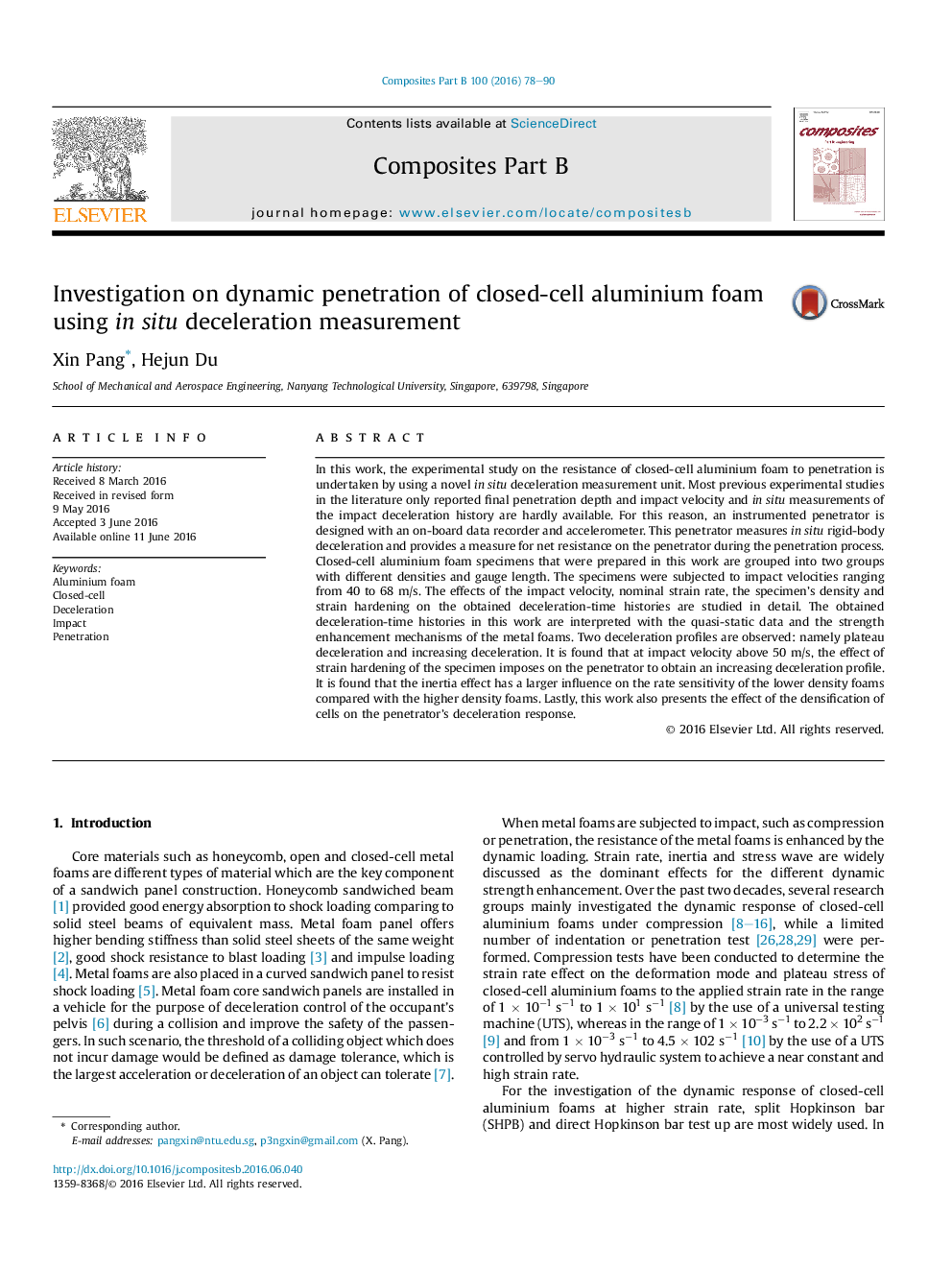| Article ID | Journal | Published Year | Pages | File Type |
|---|---|---|---|---|
| 816779 | Composites Part B: Engineering | 2016 | 13 Pages |
In this work, the experimental study on the resistance of closed-cell aluminium foam to penetration is undertaken by using a novel in situ deceleration measurement unit. Most previous experimental studies in the literature only reported final penetration depth and impact velocity and in situ measurements of the impact deceleration history are hardly available. For this reason, an instrumented penetrator is designed with an on-board data recorder and accelerometer. This penetrator measures in situ rigid-body deceleration and provides a measure for net resistance on the penetrator during the penetration process. Closed-cell aluminium foam specimens that were prepared in this work are grouped into two groups with different densities and gauge length. The specimens were subjected to impact velocities ranging from 40 to 68 m/s. The effects of the impact velocity, nominal strain rate, the specimen’s density and strain hardening on the obtained deceleration-time histories are studied in detail. The obtained deceleration-time histories in this work are interpreted with the quasi-static data and the strength enhancement mechanisms of the metal foams. Two deceleration profiles are observed: namely plateau deceleration and increasing deceleration. It is found that at impact velocity above 50 m/s, the effect of strain hardening of the specimen imposes on the penetrator to obtain an increasing deceleration profile. It is found that the inertia effect has a larger influence on the rate sensitivity of the lower density foams compared with the higher density foams. Lastly, this work also presents the effect of the densification of cells on the penetrator’s deceleration response.
